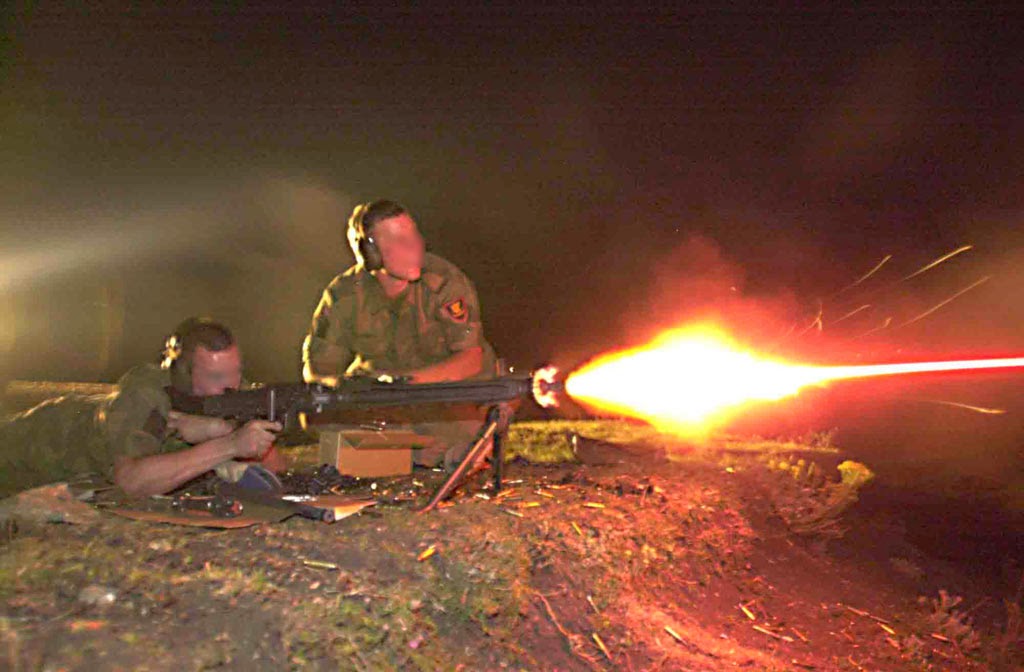In the lead up to D-Day the crew were chatting about getting some games going to simulate the various elements of the invasion, I grabbed hold of the idea of a night time Airborne assault and started to plan how it would work. The two elements I had to consider were the night fighting rules and how to simulate a para drop. Now Warlord Games has put out a night fighting set of rules so that part was easy enough, but simulating the randomness of a parachute landing was left up to us to work out.
The night fighting rules released by Warlord can be found in the Warlord errata section and whilst not covering all scenarios, give you a good base to work from. It basically adds a further requirement to the normal to-hit and damage rolls by adding a 'spot' roll. The spot roll is first worked out by declaring a target and measuring the distance, say 12", and then referencing a chart to determine what you have to make when rolling 2d6. The base score when working out if you spot an enemy is the distance minus or plus any modifiers. If the unit targeted has just moved, therefore drawing attention, on an advance or run you can add +6 so now at 12" you only have to roll a 6 from 2d6. If the targeted unit has made an advance and fired its weapons then they have been lit up by muzzle flashes and the whole world can see them so at 12" you could only fail on a double 1 (house rule).
These rules mean that combat is going to be close and deadly, as you want to maximize that chance for the spot role by minimizing distance whilst also realising that when you fire you will be easy to target. It also means that long, stand off weapons such as mortars and artillery are really going to struggle without dedicated spotters as the distance would be too great to be able to see targets. The ambush order comes into its own, you can hear an enemy and you know they are out there but you just cant see them, and to simulate we allowed a house rule that an ambush can be triggered by a fire order to reflect that a muzzle flash has been seen.
A rule, other than covered above, that we thought of to make the night fighting more fun is to have spotlights and vehicle headlights. Turn those bad boys on and you have an arc reaching out 12" and anyone caught in those lights is free game for any unit to see; but of course the vehicle or spotlight team is also lit up. Another one is if you use a flamethrower then the area you have flamed remains lit up by the fire and anyone withing 6" loses any spotting negatives, including the flame team.
The next challenge was how to simulate a parachute deployment, to make the most of the game we did not want our para's coming on from the side but straight down! To do this the table was separated into quadrants and labeled 1 through 4, and the center point of each quarter marked. When an Airborne dice was pulled they would roll a d4 to determine which quarter of the table they would land in, an order dice to determine direction (each side has a little arrow) and 2d6 to work out how far from the center point of that quarter. This would hopefully allow for a scattered deployment with squads separated from the Lt and mortar teams smack bang in the middle of a German ambush position. By bringing the Airborne troops on first turn through dice pulls, it would allow the other player to respond to the sudden appearance of elite troops by shooting or "look for targets!" by placing an ambush order against a unit.
Once an Airborne unit landed we allowed them to make a fire order, finish a run move or go down (unique to night fighting) so in effect the para drop was an advance order. They were also at +6 to spot to reflect the movement and that's why we allowed them to finish their move by going down which on the spot roll is - 6 (to reflect that a prone body is much harder to see).
Now we had the rules in place for a night time parachute assault it was time to roll dice! Tune in next time to see how the battle goes and how these rules worked in practice.










.jpeg)


